We have finally found a British Island that Argentina doesn’t want.
It wasn’t easy
To reach it we have been sailing east for 4 days. We haven’t seen a ship or a speck of land in all that time. Even the sea birds are absent.
We are in the middle of the South Atlantic Sea, a very long way from anywhere. The Falkland Islands are 2,500 miles behind us, Capetown is 1,750 miles ahead.
We have reached the most remote inhabited island in the world. And the islanders are proud of it. (If we look a little damp it is because we are soaking wet!! It rained non stop as you will see)

And as we approach Tristan Da Cunha early in the morning it certainly looks like the most remote island in the world
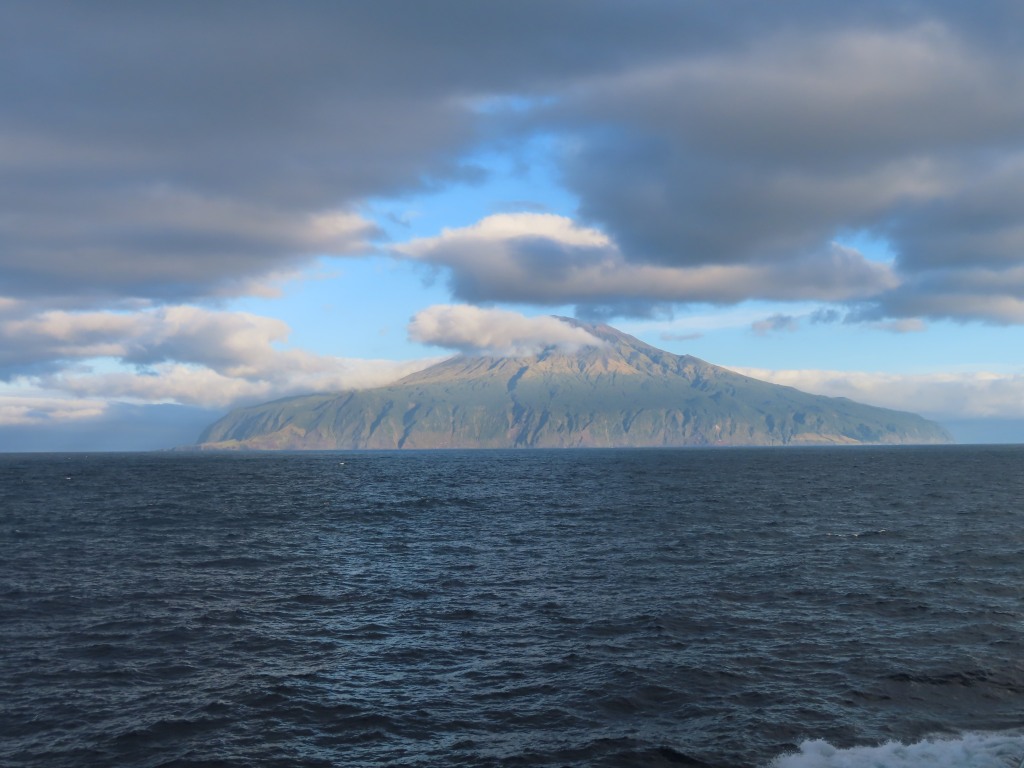
The island looks desolate, deserted, spectacular, and it must be said, a little bit threatening. Will Marlon Brando be there just like he was on The Island of Dr Moreau?
The island is basically the top of a volcano sticking out of the ocean. It is no wonder that Argentina doesn’t want it. But the UK does. Of course they do. Even if it is at the other end of the world in the middle of nowhere, it is one more pink dot on the map, one more place to fly the union jack.
In 1961 the volcano erupted and the British, aware of their parental responsibility, evacuated all 250 inhabitants off the island and took them to England. Like most children they complained a lot. It snowed which they didn’t appreciate, there were too many people, too much traffic, too much noise and on and on they went! The moment they were able to return to Tristan Da Cunha, they did. They rebuilt their little town and happily settled back into inbreeding. The population increased to 300. It didn’t improve the gene pool much. There are only seven last names on the entire island and you either partner up with a sibling or a cousin. And trust me when I tell you, it doesn’t make for a particularly good looking group of people.
As we sail round the island looking for the only settlement, the weather changes rapidly. By the time the town is in sight the island is shrouded in mist, which apparently is how it is most of the year.
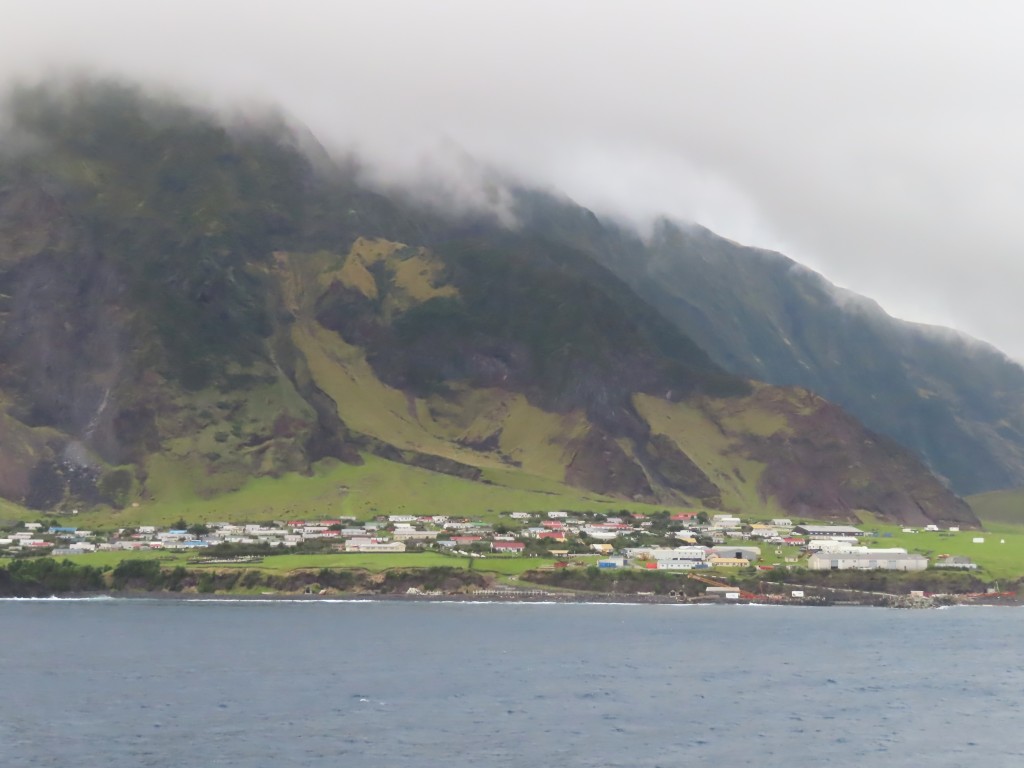
There is no airport. The only way to visit is by ship, but there is no port. Getting onto the island has to be done by tender or zodiac and as the weather is invariably bad, it makes landing problematical if not impossible. A supply ship comes once a month from Capetown and often has to wait days before it can unload its cargo.
We are the sixth cruise ship to come to the island since October and the passengers from only one of those ships made it ashore. Our Captain has sailed here much faster than planned because he knows there is a huge storm on the way. He has got us here a day early in the hope of being ahead of the storm. But the weather is definitely deteriorating, although the winds haven’t started as yet. There is quite a swell but the sea hasn’t turned angry .
Believe it or not, we have been here before. It was 20 years ago and we were unable to set foot on the island that time. Instead we gazed at it from the cruise ship. Somehow it has remained in our memory, and we have been trying to return ever since. But it is not a spot that ships often go to because it is so remote. We have finally made it, but will we get ashore?
The zodiacs are launched and ready. The crew know that we have tried to land here before and make sure that we are in the first zodiac. We are ready! But we have been warned that the small harbour, for want of a better name, was poorly built and instead of sheltering you from the waves it actually acts like a funnel and the waves can be tricky within the harbour walls.

The ride in is fine but as we pull in to the flight of very slippery steps, the swell is getting worse and the zodiac rises and falls several feet making stepping out of it a tricky proposition. A large number of the expedition crew are standing by to help us. They seem rather worried. One inside the zodiac holds the back of our life jacket and two on the steps grab our arms, and then suddenly we are on Tristan Da Cunha. It is an exhilarating feeling.
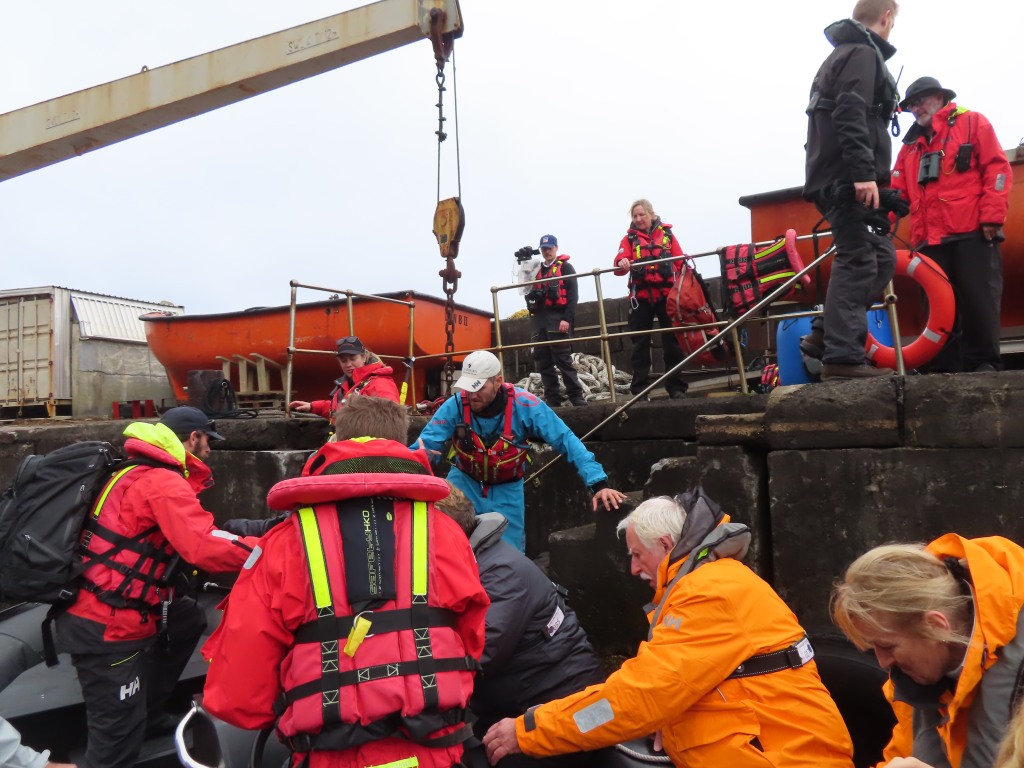
There is little to do on the island. I should rephrase that. There is nothing to do on the island. But the islanders, excited at having a cruise ship visit, want us to make the most of it. Three of them have agreed to lead anyone who wants to go up the volcano. In a rash moment we decided that is what we would do.
We are met at the dock by Andre, one of the better looking inhabitants. A very friendly chap and surprisingly not married. It does beg the question….! He takes a shine to Gordon and I, and happily poses for photos, putting his arm around each one of us and standing unnaturally close. As I say, a very friendly chap.
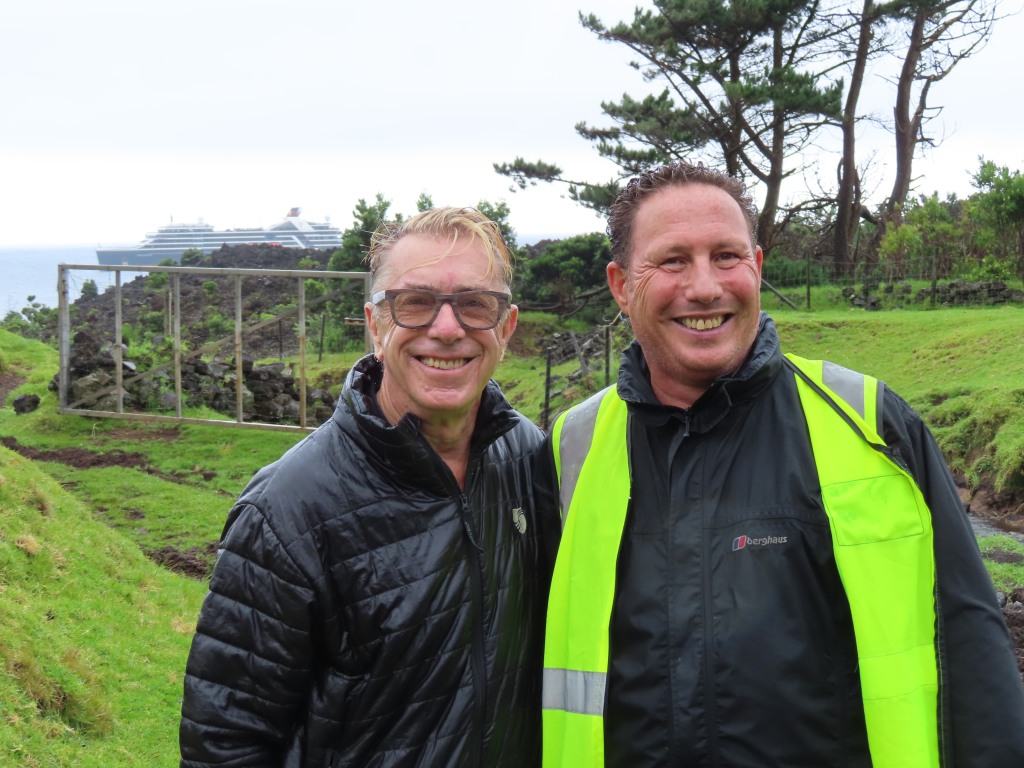
There are fifteen of us in his little group and he sets off across some fields towards the volcano. We cross one of their better made bridges
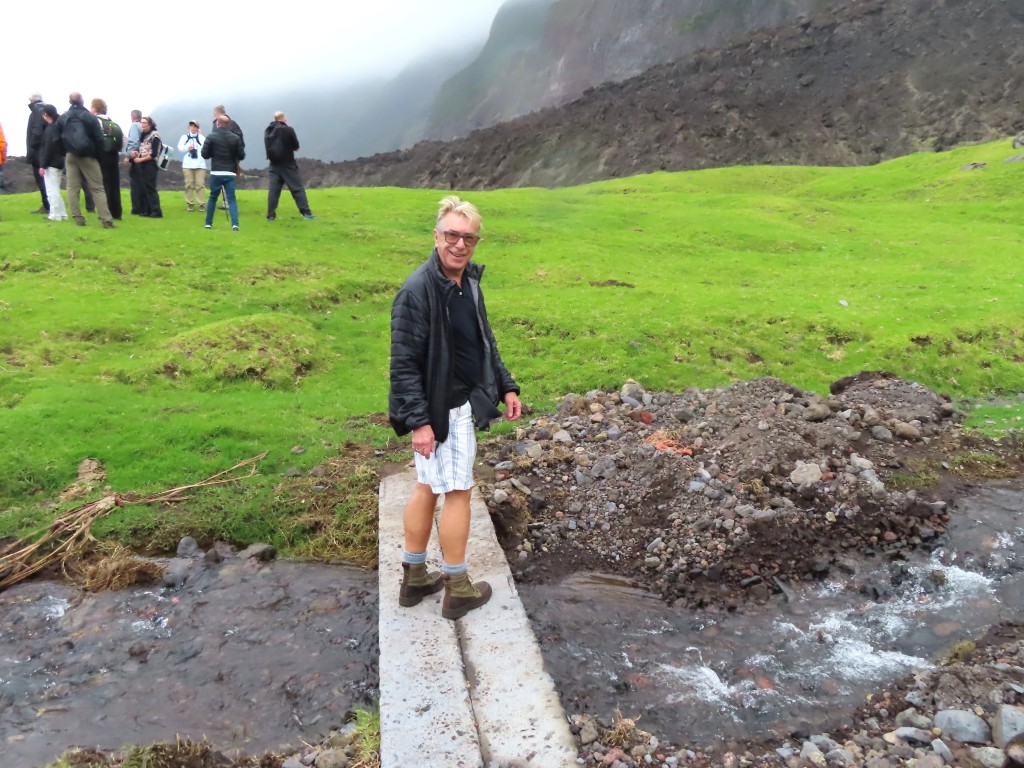
As we begin the climb, Andre’s lack of experience as a guide soon becomes evident. He marches off up the hill leaving us to struggle behind him
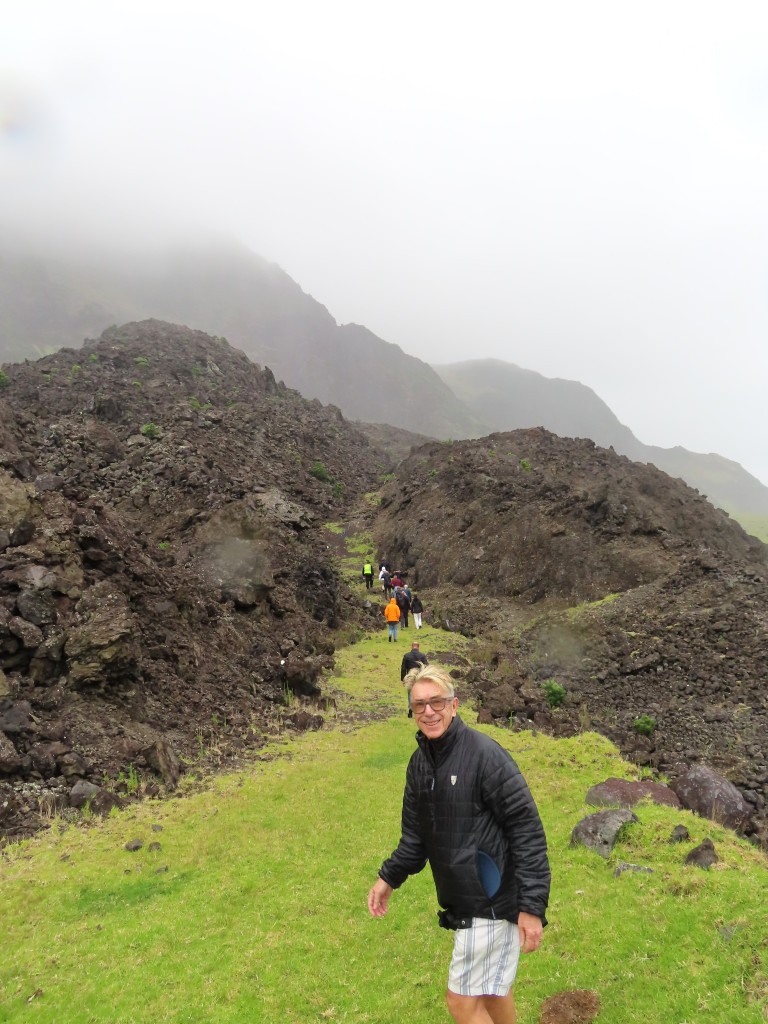
He is blissfully unaware that he is many years younger than any of us and a great deal fitter. He strides off at a fast pace never stopping to check how we are doing. He forgets that even if we could keep up with him (we can’t) that we want to stop for photos
The going gets decidedly tough, and the tough get going. That would be us!
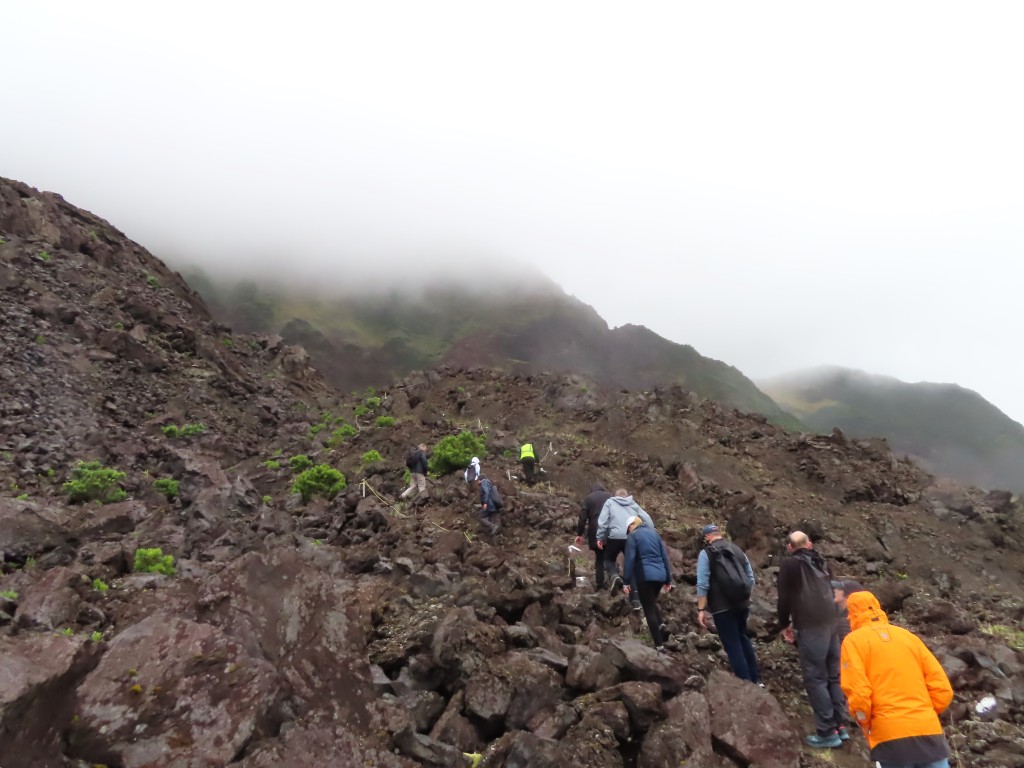
The weak drop like flies and make their way back down.,
But we continue on. As we climb, the weather gets more and more unpleasant. The rain runs down my neck, my clothes are soaked through, but on we go.

I can no longer take photos – as soon as I open my camera, the lens gets covered in rain.
Our legs are feeling the strain and Gordon’s knees are complaining. And the weather brings more discomfort
But on we go.
Our guide finally stops. We assume he has taken taken pity on us at last and is giving us a rest stop.
But no. It is even better than that. This is as far as he will take us. We can’t go all the way to the top, as it gets quite treacherous, he explains. We try to sound disappointed but we are too busy gasping for breath. We are not the last ones standing, but we are the oldest ones. We feel rather proud of ourselves.
As we head back down, the rain eases and I turn. Using the zoom lens, I take a quick shot of the next group making the climb – you can see the orange specs of their parkas dotted up the side of the mountain
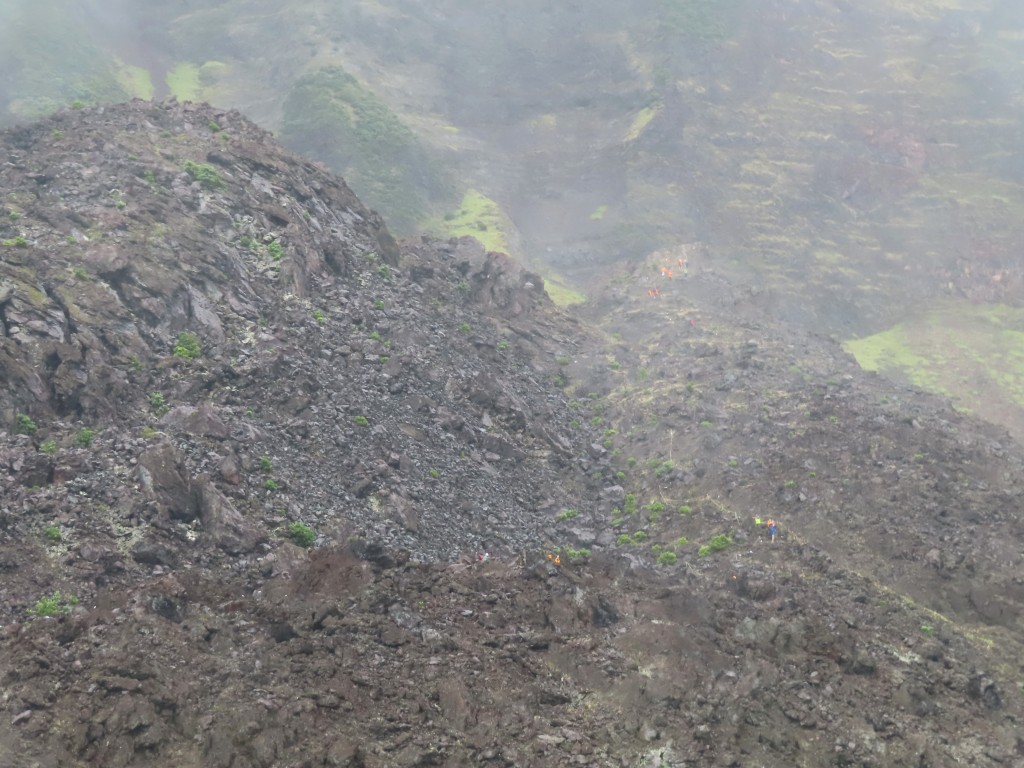
Once we are back down, Andre takes us to see the museum which shows how they lived before the volcano erupted.
A beautifully made sign announces our arrival.
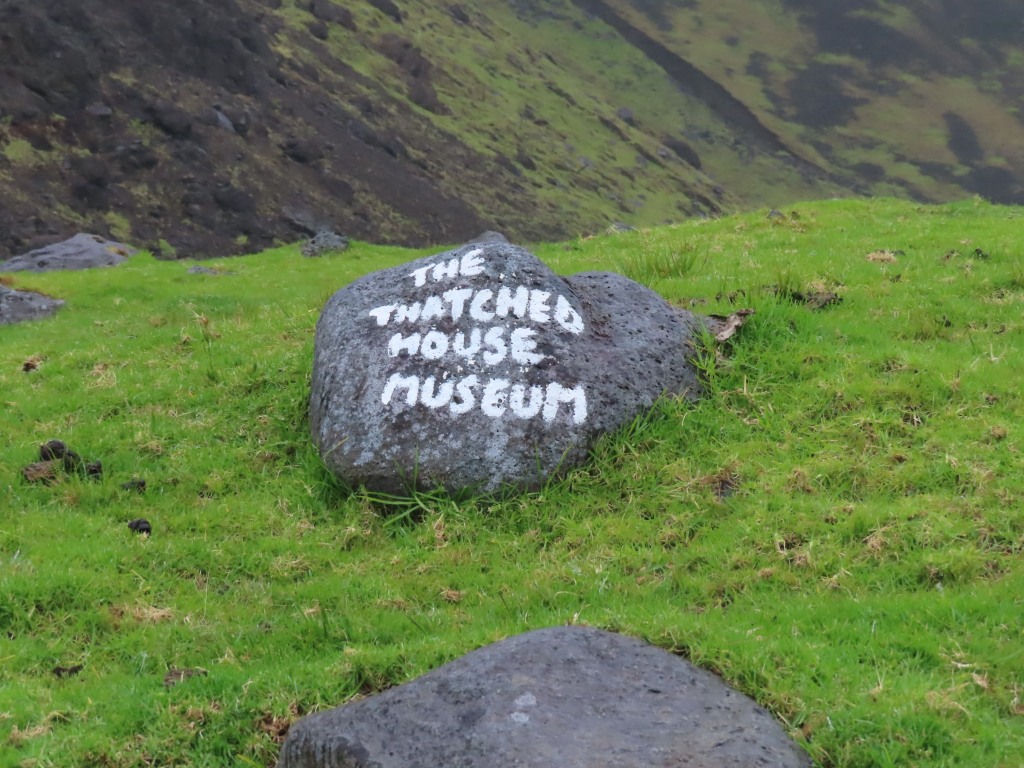
It is not much to look at from the outside

and even less to look at inside
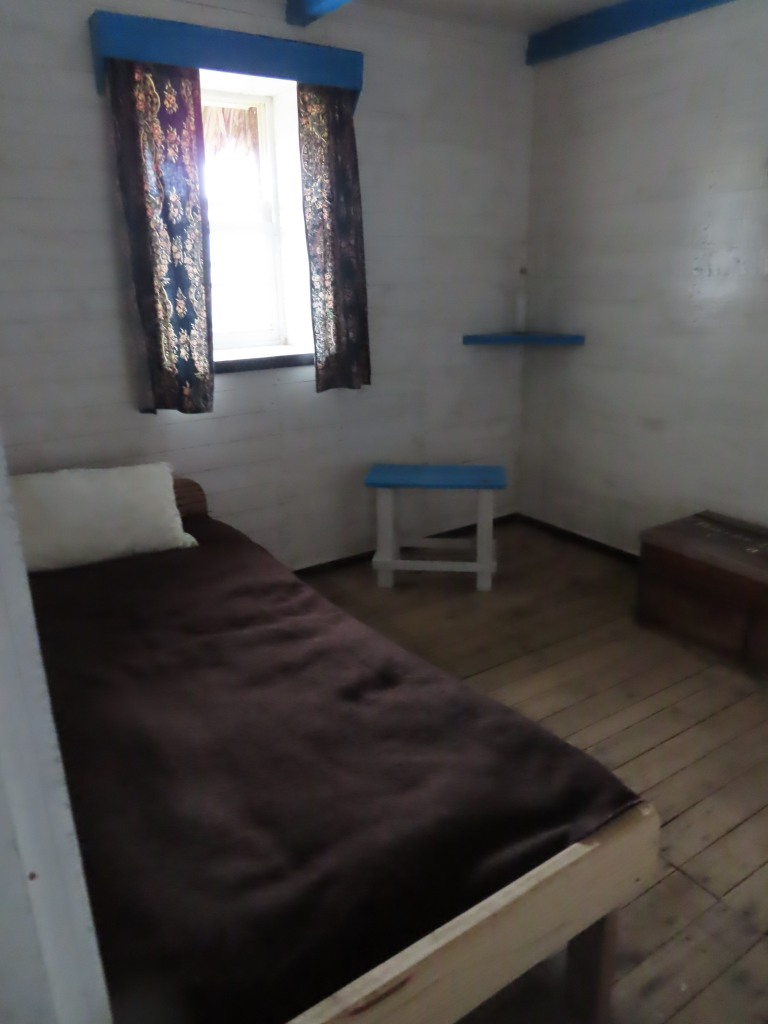
Andre tells us that the islanders reconstructed this house in an effort to attract tourism.
I wonder how that is working out for them?
